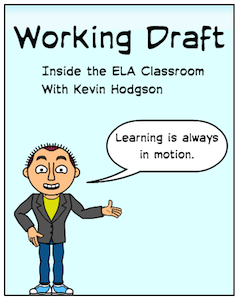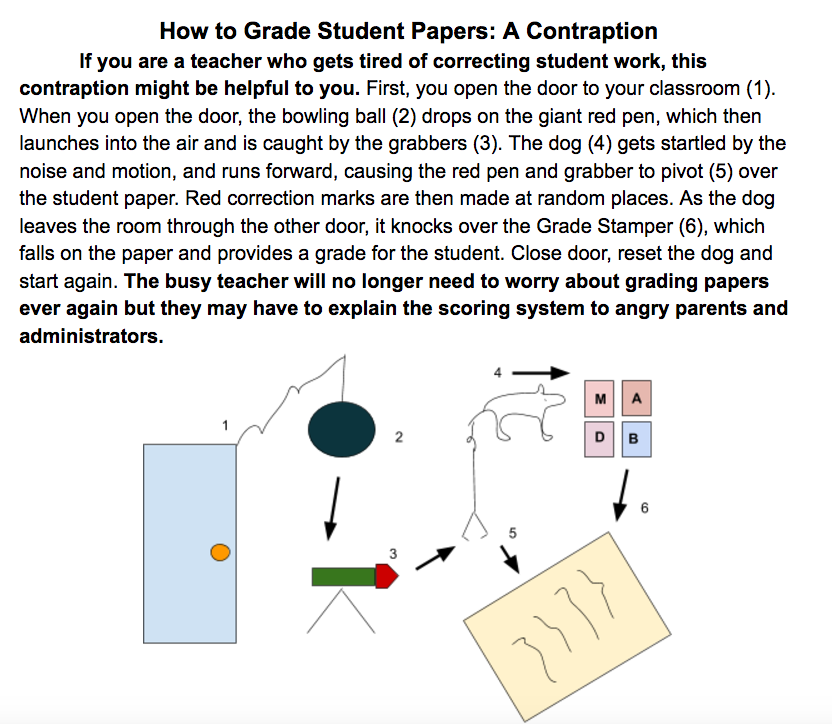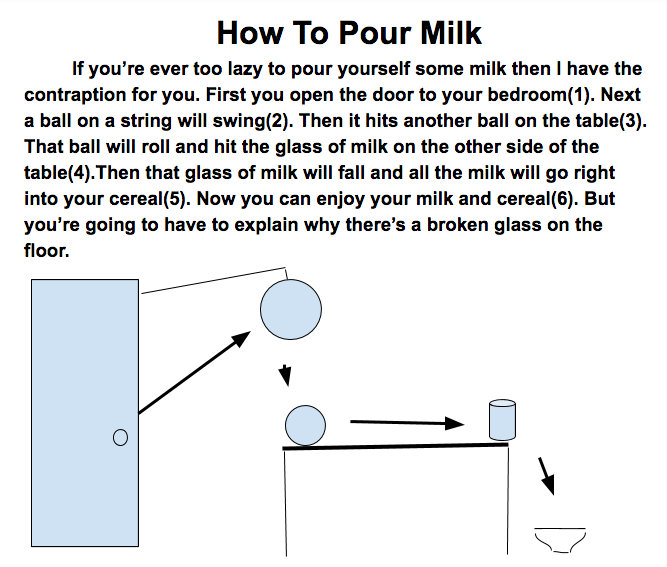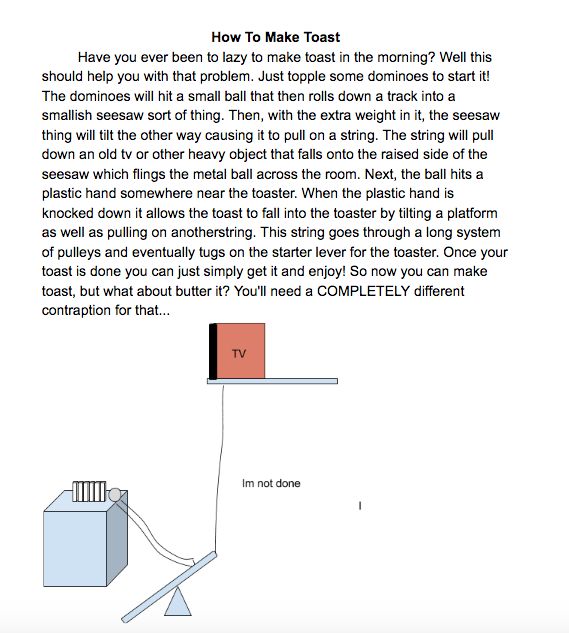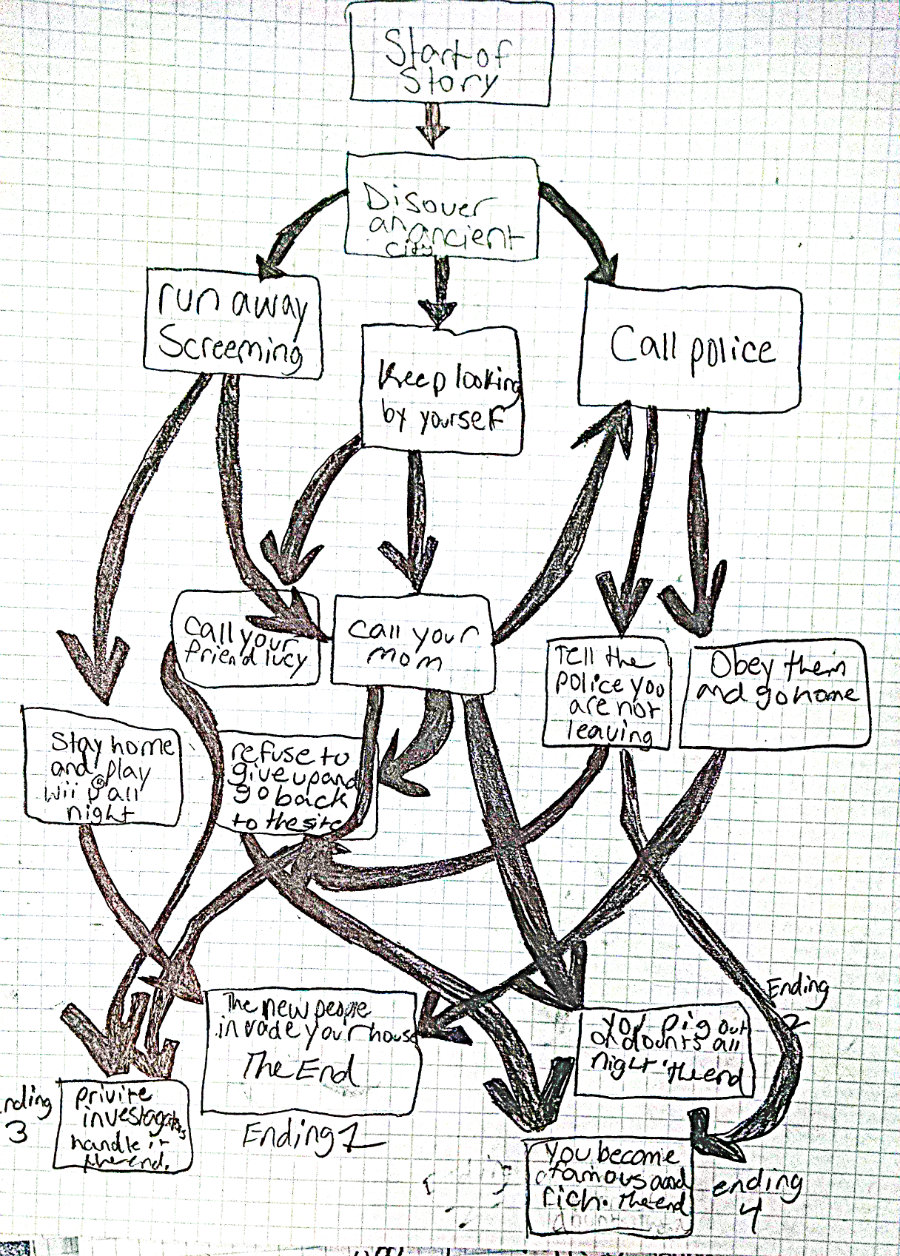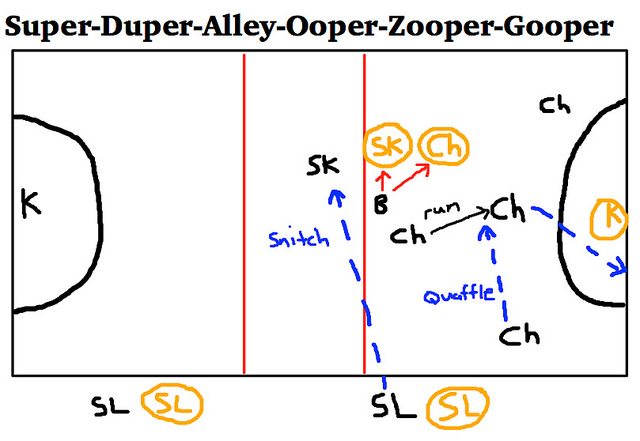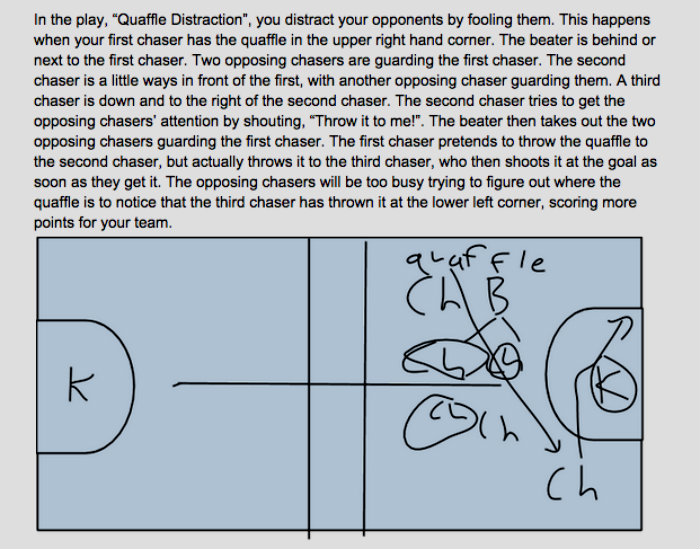Teaching Students to Write about Contraptions
A MiddleWeb Blog
“A system is a collection of interacting components that function as a whole, where the whole is always greater than the sum of the parts. If you change one component, the whole functions differently. Although this may appear to be relatively straightforward on the surface, identifying the components of a system requires understanding how a system actually works.“
— Katie Salen Tekinbas, Kylie Peppler, Melissa Gresalfi, and Rafi Santo, p. 199, Gaming the System: Designing with Gamestar Mechanic
Bear with me for a second. Imagine a piece of writing not merely as a collection of words and ideas, but as a system of parts.
Elements like sentence structure, parts of speech, word choice and more then become more visible as we think of how every part has a role in the creation of a flowing piece of composition.
A few years ago, I attended a number of workshops through the National Writing Project on the concept of Systems Thinking. These learning opportunities were connected to the publication of three books, including Gaming the System: Designing with Gamestar Mechanic, in which the authors explored this notion of systems in connection to the emerging Maker’s Movement and gamification of classroom learning experiences. The central concept was to look at learning and writing with a different lens.
To be honest, I was a little skeptical about how this concept might translate into my writing classroom with sixth graders. Would a Systems Thinking approach make the act of writing mechanical and technical to the point of losing the essence of writing itself? Then I realized that in some ways we were already doing Systems Thinking, mostly in the planning stages of a piece of writing.
And I was reminded of something that the main crafters of the Common Core, David Coleman and Susan Pimentel, had noted early on and which brought a lot of criticism.
They argued that in the “real world” beyond school, people don’t often write short stories and narratives for their jobs. Most workers do write technical pieces, which often explain how to do something for an audience or for their supervisors.
As much as I disagree about losing aspects of narrative writing, particularly poetry, I have to reluctantly agree with the argument they made, and their underlying criticism of the status quo. We don’t do enough technical writing and technical thinking in our classrooms. This is where Systems Thinking might come into play. And this is how it has been playing out in my sixth grade classroom, mostly in our unit around informational and expository writing.
Rube Goldberg Contraptions
There are plenty of science classrooms that use the idea of the Rube Goldberg contraption to teach engineering design. Our high school even has a regular Rube Goldberg competition. In my class, though, we merely do paper designs, using humor and writing to explain how a simple task might be made more complex, and how each step in the task has its own importance, no matter how ridiculous.
Students have a lot of fun with this activity, where the crazier the idea, the better. The designs of the contraption then become the basis for a very logical expository piece of writing, showing the reader the steps to whatever it is that needs to be done.
Interactive Fiction
When we make our Interactive Fiction, also known as Make-Your-Own-Ending stories, the development of what we call a “story tree” and its various “branches” – or decision points – is crucial to the writing.
Every part of the story tree plays a role and guides students forward into the actual construction/composition of their stories (done in Google Slides, with hyperlinks). There is a logic to the story tree, which is important, for the writer can easily get lost in the building of the story. The flowchart of the story tree reveals the overall design and makes clear how each piece of the story is connected. There’s also room for humor and plenty of systems (contraption) thinking.
Sports Play Diagramming
I once watched a fascinating video at the National Writing Project’s Digital Is site, in which the literacies of making, reading and explaining a diagrammed sports play (it was football, if I remember) was made clear by the teacher, who related it to the study of poetry and other texts. What seemed to be merely lines and symbols on the screen came alive as instructions, interactions and movements designed to unfold as a logical sequence.
This inspired me to have my own students design their own plays, in similar fashion, for our school’s game of Quidditch. My only twist is that they can include magic in their diagrams, although quite a few design them for reality, to be played out on our gym floor by their classroom teams.
What always strikes me with this activity is the sudden insight that some of my athletic students have as they realize the system of the play’s parts is an act of reading, and that the diagramming of a play is an act of writing.
And if we think about the larger picture, we can see that the argument for understanding the nature of systems is far-reaching. If writing is a way to better understand ourselves and our world, then writing with a Systems Thinking bent from time to time might help us to make more visible the ways in which we can make changes for the betterment of everyone.
Today, we humans face massive problems because of complex systems. These are systems we have helped to create because of insufficient intelligence and care, systems like global warming, environmental degradation, broke governments, rapid technological change, national and global inequality and global flows of immigrants fleeing war, poverty and drought.” – James Paul Gee, Foreword, Gaming the System
Images: My students’ work unless otherwise indicated

